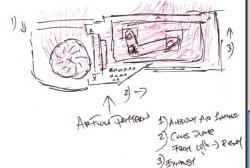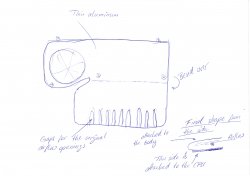I know, I mean how would you be able to transfer the heat from the heatsink to the panel.
You can try that, but in theory that would be counter productive because again, the air flow is being blocked from exhausting the warm air into the outer environment. Instead, the warm air might just be pushed around and swirling around inside rather than exiting.
How does the hot air leave the system now? You said that air flows accross the heatsink, but there's nothing on the far side of the heatsink to blow the air out of the vents. When the fans running 7200 rpm, I can't feel much air coming out of the vents



